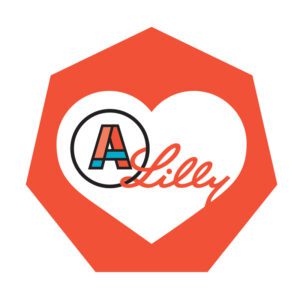
Illustration by Tabitha Walters
The arrival of the Art Fairs conjures up plenty of images for Ann Arborites, like oversized sun hats, thunderstorms, art on a stick, and extortionate parking. This summer, though, Eli Lilly and Company is adding an unexpected contender to that list with a fleet of bright red mobile research units.
The pharmaceutical giant started with a single location in the Original Fair on North University in 2022. This year, it will be everywhere as the first-ever presenting sponsor of all three fairs.
At North U by Ingalls Mall, the corner of S. Main and E. Liberty, and State and South U, attendees can learn about and be screened for participation in Lilly’s clinical trials of future pharmaceutical drugs. A fourth location on E. Liberty in the parking lot next to Ragstock will couple screenings with science-inspired art-making opportunities supported by the U-M Arts Initiative.
Like many recent innovations in health care, Lilly’s mobile screening initiative arose out of Covid, when mobile facilities were necessary to reach high-risk patients living in nursing homes. Now their use continues as a way to reach populations who might not otherwise be aware of or able to participate in clinical research.
“Diverse representation in our trials is important,” says LaShan Neville, Lilly’s senior director for central clinical services, in a video promoting the units, “because we want to ensure that the drugs that come to market represent the population of the world.”
Lilly is putting extra effort into its clinical trials, and it’s paying off. According to a June article in the Wall Street Journal, accelerated trials brought Lilly’s diabetes drug Mounjaro to “pharmacy shelves two years ahead of schedule” in 2022. Mounjaro’s weight-loss cousin, Zepbound, followed last November. Together the fast-tracked drugs brought in $5 billion last year, the Journal reported, “and are on the way to becoming some of the best-selling pharmaceuticals of all time.”
The fairs didn’t say what the company is paying, but “the sponsorship helps us to cover the costs of putting on an event of this magnitude without over-burdening the artists that come to participate,” says Karen Delhey, executive director of the Guild of Artists & Artisans. That “allows us to keep the event and activities free to the community.”